Encountering Gorillas
Encountering Gorillas
A Chronicle of Discovery, Exploitation, Understanding, and Survival
James L. Newman
Rowman & Littlefield Publishers, Inc.
Lanham Boulder New York Toronto Plymouth, UK
Published by Rowman & Littlefield Publishers, Inc.
A wholly owned subsidiary of The Rowman & Littlefield Publishing Group, Inc.
4501 Forbes Boulevard, Suite 200, Lanham, Maryland 20706
www.rowman.com
10 Thornbury Road, Plymouth PL6 7PP, United Kingdom
Copyright 2013 by Rowman & Littlefield Publishers, Inc.
All rights reserved . No part of this publication may be reproduced, stored in a retrieval system, or transmitted in any form or by any means, electronic, mechanical, photocopying, recording, or otherwise, without the prior permission of the publisher.
British Library Cataloguing in Publication Information Available
Library of Congress Cataloging-in-Publication Data
Newman, James L.
Encountering gorillas : a chronicle of discovery, exploitation, understanding, and survival / James L. Newman.
pages cm
Includes bibliographical references and index.
ISBN 978-1-4422-1955-7 (cloth : alk. paper) ISBN 978-1-4422-1957-1 (electronic) 1. GorillaConservation. 2. GorillaEffect of human beings on. I. Title.
QL737.P96N49 2013
599.884dc23
2013008124
 The paper used in this publication meets the minimum requirements of American National Standard for Information SciencesPermanence of Paper for Printed Library Materials, ANSI/NISO Z39.48-1992.
The paper used in this publication meets the minimum requirements of American National Standard for Information SciencesPermanence of Paper for Printed Library Materials, ANSI/NISO Z39.48-1992.
Printed in the United States of America
For Gorillas Everywhere
Preface and Acknowledgments
In search of an interesting elective during my undergraduate days at the University of Minnesota, I enrolled in a course titled Exploration and Discovery. It didnt disappoint me, and I particularly enjoyed being able to travel back in time to visit distant lands and peoples. Over the ensuing years, I would occasionally read about explorers and their exploits, but serious study didnt begin until much later. In 1996, I had just completed a book called The Peopling of Africa: A Geographic Interpretation , dealing with events on the continent from prehistoric times up until the final decades of the nineteenth century. Explorers entered now and again, and I began to think about how they shaped the external worlds view of Africa and impacted Europes colonial undertakings. This led me to the famousand, in many minds, infamousHenry Morton Stanley and a 2004 book about him called Imperial Footprints: Henry Morton Stanleys African Journeys . While finishing it, a thought crossed my mind, namely, that true discovery isnt just a one-time thing but often a long-term process. By this I mean that once something is discovered, it is rediscovered as more information becomes available, and along with this discovery come changing views and impacts. Yes, I am aware that the idea of discovery is often ethnocentric. In Africa, people knew about mountains, lakes, rivers, gorillas, and so on before Europeans arrived to put them on a map. Exploration and discovery are thus for others, those living in the world beyond. As David Buisseret has remarked, it can be seen as the process by which one or more people leave their society and venture to another part of the world (or, now, the heavens) then return in order to explain what they have seen.
Somehow, and I cant remember why and when, gorillas entered my mind. I had been to Africa on various occasions and seen much of its iconic wildlife but not gorillas. Anyway, I began to read about them and in doing so realized they exemplified discovery as a continuing process. The outcome was a journal article called The Discovery of Gorillas: The Journey from Myth to Reality.
My thoughts, though, had become focused elsewhere. I had enjoyed researching and writing about Stanley and, after looking around for another subject, decided to try my hand at Richard Francis Burton, an undertaking that pretty much consumed my time for five years. With Paths without Glory: Richard Francis Burton in Africa finally behind me in 2010, I returned to thinking about gorillas. But how could I approach them? Clearly, it wouldnt be as either a professional primatologist or a conservationist. After some further reflection, I decided to expand on the idea of discovery by developing a story about how gorillas have entered the lives of people over time and how this has had consequences for them and, by extension, us as well. Furthermore, I had already written about people, and the project would enable me to do so again, this time dealing with an array of individuals whove been important in shaping how we think about and act toward gorillas. And these individuals would have to include gorillas themselves.
After making this decision, I had to decide on a title. Gorillas in Our Midst proved to be irresistible, as it played on Dian Fosseys Gorillas in the Mist , arguably the most famous book cum movie ever written about gorillas. But I soon discovered the title had been used previously for a small book about gorillas at the Columbus Zoo. Although titles arent subject to copyright laws, I decided to search for another in order to avoid confusion. The current one eventually emerged as an even better option since the story is about encounters.
A subtitle clearly would be needed. Discovery had to be there, and as I began writing my narrative, it became crystal clear that gorillas had suffered terribly at the hands of humans, often as a result of misunderstandings due to bad press from many different quarters. It would take quite a while for the inaccuracies to be corrected, and as this happened, more and more people, specialists and nonspecialists alike, have rallied to their defense. Still, the survival of gorillas hangs in the balance.
For my books on Stanley and Burton, I relied heavily on archival documents, supplemented by an array of information from other sources, mostly in the physical and social sciences. I find the process of synthesizing diverse information stimulating. Its how my mind seems to work and thus how Ive approached teaching and writing. This time my sources are mostly published works, along with movies and other representations, because public reception is crucial to the conditions gorillas find themselves in and also to attempts to ensure their continued survival. Ive also ventured, with some trepidation, into the humanities and playing the role of movie critic.
I havent done fieldwork among gorillas because Im not equipped for this task. Specific training is required. I did consider going to Africa to visit them in either Rwanda or Uganda but decided not to. The cost is considerable, and looking at gorillas in one of the parks wouldnt yield anything positive beyond the thrill for me. I cant see the gorillas profiting by my presence. Moreover, Im convinced that only qualified researchers and others engaged in protecting gorillas should be allowed near them. We pose many dangers, as I will try to show. Consequently, my visits to gorillas have been confined to zoos, where I also did some interviewing of staff for the section on zoos in the last chapter of the book.
I bring two perspectives to the study of gorillas different from previous works. As can be seen from my previous books noted above, Im a student of Africa. Its where my mind has been focused throughout a career spanning more than forty years, with special attention paid to issues of population and environment. And gorillas are members of Africas population who inhabit particular environments. Also, Im a geographer by training, and while people of this persuasion study many different things from the inorganic to the organic, most agree that place matters. It can be a small place like a neighborhood, a region (such as the tropics), or even the whole world. It all depends on ones purposes. Along with this goes the notion that places are interconnected with others to varying degrees and that these interconnections change over time, altering the nature of places. In the following pages, well see how the places of gorillas have changed.

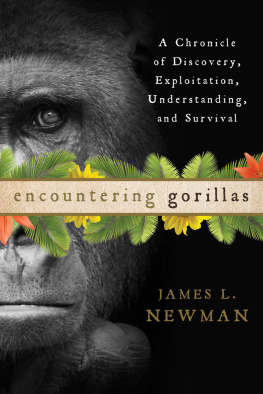
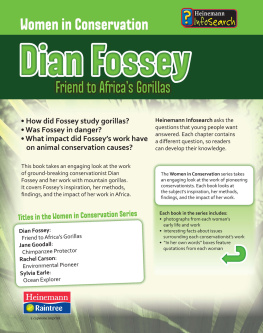

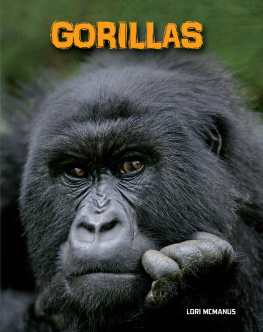
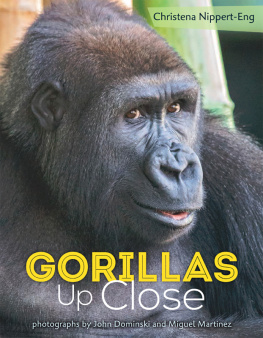
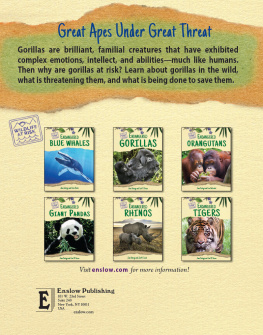
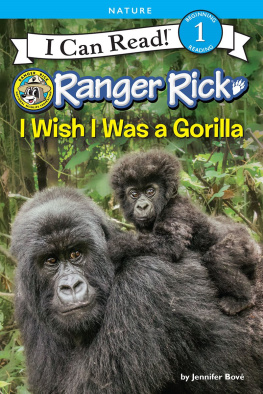

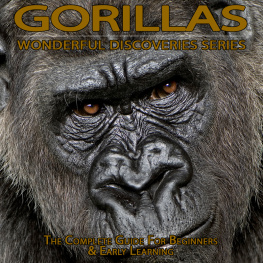
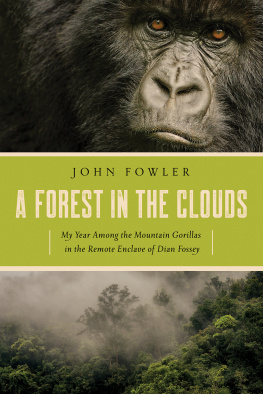

 The paper used in this publication meets the minimum requirements of American National Standard for Information SciencesPermanence of Paper for Printed Library Materials, ANSI/NISO Z39.48-1992.
The paper used in this publication meets the minimum requirements of American National Standard for Information SciencesPermanence of Paper for Printed Library Materials, ANSI/NISO Z39.48-1992.